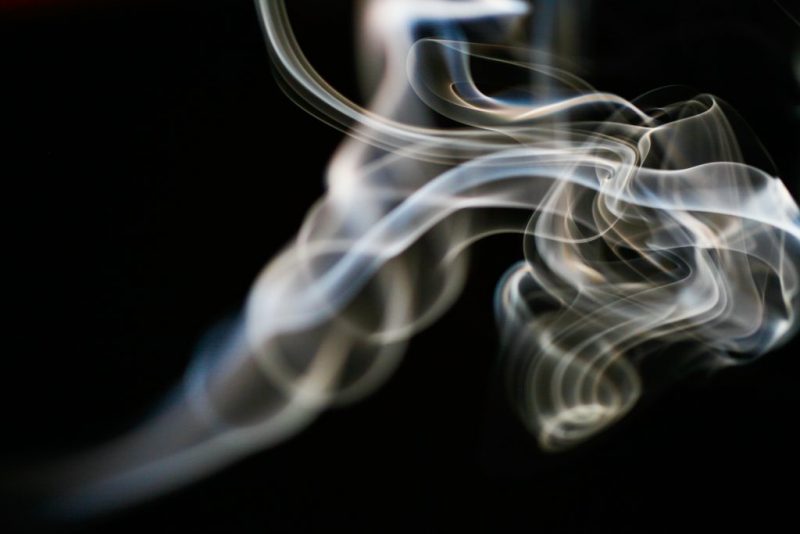A new report has been released by the Prime Minister’s Chief Science Advisor which questions all our assumptions around ‘safe’ meth contamination levels in residential houses. The report essentially says the old trigger level of 1.5 mcg per 100 sq cm was way too over-zealous and contamination levels would have to be many, many times higher to even have the possibility of causing negative effects.
In this article, you’ll find advice for buyers and property owners in light of the new findings and thoughts on whether you should be doing a meth-test before buying.
The fallout from this new report has been interesting, to say the least:
- Property managers I have canvassed are saying they aren’t going to bother doing meth-tests on any of their properties in future (when previously it was a regular undertaking).
- I’ve been receiving emails from meth testing companies saying ‘nothing has changed‘ and to ignore the report until the official Ministry of Health standard is updated.
- I’m hearing that property investors are starting to entertain the idea of targeting stigmatised properties with some contamination level as potential good investments.
- The REA have just released new disclosure obligation guidelines which change the game again.
The funny thing about all this? Turns out this over dramatisation was flagged back in 2016 by Nick Kim from Massey University, but unfortunately, no one seemed to be listening back then.
The key problem’s right now:
- Because of the way this issue has been portrayed in the media since it really came on the scene in 2010, buyers are now scared of buying a property with any level of meth contamination, no matter how insignificant.
- Positive meth tests need to be disclosed to prospective purchasers so any property with a positive test in its history will have a stigma associated with it which can massively reduce its value.
- Hundreds of tenants have been kicked out of houses and ordered to pay decontamination costs which, based on this new report, possibly weren’t warranted after tests showed casual meth use in their homes.
- Mould may well be a far bigger health issue to a property’s occupants than any meth contamination.
- Over $100 million has been spent by Housing NZ alone, de-contaminating houses which may not have needed it.
- Housing NZ has removed 900 houses from its portfolio during our biggest ever housing crisis after they received positive tests.
Read: This stuff article by Henry Cooke sums up the history of the issue extremely well.
Should you buy a property with a history of meth contamination?
When considering this question, it’s important to keep in mind that meth is like any other harsh chemical we are exposed to as part of our everyday lives.
My concern is, how much of the stigma associated with this particular compound comes from the social cost involved in its use? Yes, I wouldn’t want my kid playing on carpet with a whole lot of meth residue, but I also wouldn’t want him playing on floors with a whole lot of Drano residue either, but we don’t do Drano tests before we move into a property.
A whole industry has emerged in a relatively short period of time playing on our fear of this class-A drug.
Personally, I would definitely consider buying a property which has had a positive test in the past which likely resulted from casual meth use. I would expect to buy it cheaper than other homes on the market too. Not because there is a health risk (there likely isn’t anything to worry about) or because it should be any cheaper, but just because that social stigma may still be there when I come to sell that property later on. It is going to take a long time for that ‘social fear’ to dissipate.
I would take the same approach when buying a property that had been occupied by heavy cigarette smokers.
Peter Gluckman’s report includes police estimates that 1% of the population has tried meth in the previous few years. So it is likely that a very small amount of meth contamination is a lot more common than you think.
What you really want to avoid is buying a property that has been used as a meth-lab. I would look out for weird burns or stains on kitchen benches, or strange areas in the garage that look like they have been used for cooking. I would look for un-explainable burns or marks in flooring that wouldn’t seem to come about from everyday family living.
Consider this – 74 meth labs were found in 2016. 50 of those were in rental properties. 4 of them were in Housing NZ properties. What that tells me is that this is not just a ‘rental property issue’. Meth use permeates all parts of our society.
What should you do if you own a property that has tested positive for low-level meth contamination?
I would invest in new carpet and I would re-paint the interior walls throughout the property. I would disclose the test results to your chosen real estate agent and your prospective purchasers. Better they hear it from you, than from the neighbours after they’ve moved in. Bear in mind that the cosmetic changes you make to ‘clean’ the property will add value so they aren’t a completely sunk cost.
This just in: Read about your disclosure obligations as prescribed by the REA.
Also bear in mind that while a positive test result may affect value, other factors could well have a bigger influence on your end result, particularly unconsented additions, defective title issues, the competency of the agent you hire to sell your home and/or the marketing method you use.
Should you get a meth-test before you buy?
Personally, I will only be doing this if I think there is a risk that the property has been used as a meth-lab. And if that’s the case, my interest probably wouldn’t go that far anyway!
Are you still concerned?
I highly recommend you keep reading.
What follows below is the ‘Executive Summary’ (ie. the important bits), taken from the report recently published by Professor Sir Peter Gluckman, Chief Science Advisor to the Prime Minister, titled:
Methamphetamine contamination in residential properties: Exposures, risk levels, and interpretation of standards
In my opinion, this should be required reading for every future home buyer and property owner in New Zealand. I’ll let Peter take it from here…
Background – the methamphetamine situation in New Zealand
• Methamphetamine is a powerful, highly addictive stimulant used illicitly in New Zealand and around the world. It is obtained either through smuggling into the country, or by being manufactured locally in clandestine laboratories (meth labs). These meth labs may be found in residential dwellings, commercial accommodation, and even vehicles.
• A dwelling can become contaminated with methamphetamine residues if the drug is manufactured or smoked within it. Smoking usually results in much lower residue levels compared with manufacture. The question that forms the basis of this report is whether, and at what level of detection, methamphetamine residue on household surfaces poses a risk to human health.
Detecting methamphetamine as a contaminant in dwellings
• International guidelines have been developed specifically for cleaning of contaminated premises after a meth lab has been discovered. These guidelines use the detection of methamphetamine below a specified low level after remediation as evidence that other hazardous chemicals and solvents associated with traditional methamphetamine manufacturing methods have been sufficiently cleaned away.
• In New Zealand, manufacturing methods have changed and now mostly eliminate the risks posed by other hazardous chemicals. Methamphetamine is, therefore, the primary contaminant arising from both manufacture and smoking. However, overseas
guidelines developed for cleaning after manufacture have increasingly been used in New Zealand to suggest a need for methamphetamine testing more generally, regardless of whether or not manufacturing activity is suspected.
• In the absence of clear scientific and health information, there has been an assumption among the general public that the presence of even trace levels of methamphetamine residue poses a health risk. An industry of methamphetamine testing and remediation companies has emerged alongside these concerns. As a result, remediation of properties considered at risk has been undertaken – sometimes at great cost.
• This situation is largely unique to New Zealand – in other countries methamphetamine investigations focus mainly on identifying meth labs (or former labs), and remediating them when found. Non-meth lab contamination generally does not lead to any particular consideration or action. The question thus emerges, is the New Zealand approach over-precautionary or appropriate?
Methamphetamine exposure and health
• Passive, third-hand exposure to methamphetamine can arise through residing in a dwelling previously used as a clandestine meth lab, or where a significant amount of methamphetamine has been smoked. Former meth labs generally have relatively high levels of methamphetamine residue on sampled surfaces (levels greater than 30 μg of methamphetamine per 100 cm2 surface area are thought to be indicative of manufacturing activity). There is some evidence for adverse physiological and behavioural symptoms associated with third-hand exposure to former meth labs that used solvent-based production methods, but these symptoms mostly relate to the other toxic chemicals in the environment released during the manufacturing process, rather than to methamphetamine itself.
• However, there are no published (or robust, unpublished) data relating to health risks of residing in a dwelling formerly used only for smoking methamphetamine. Yet, given the relatively low number of confirmed meth labs found, and the very low average levels of methamphetamine found in most houses that test positive for the drug, most New Zealanders will only ever encounter very low levels of residue that are the result of methamphetamine use.
Establishing health-based standards for methamphetamine exposure
• In New Zealand, from August 2010 until June 2017, the only available guidance for cleaning of contaminated dwellings was a Ministry of Health guideline intended to be applicable to former meth labs. This indicated an acceptable level (after cleaning) of 0.5 μg of methamphetamine per 100 cm2 surface area, which was derived directly from an Australian risk assessment report that likewise focused on former meth labs.
• A 2016 risk-based review of these guidelines by the Institute for Environmental Science and Research (ESR) concluded that 2 μg/100 cm2 is an appropriate precautionary cleanup guideline for methamphetamine-contaminated houses not known to be former meth labs. In June 2017 a new standard of 1.5 μg/100 cm2 was selected as the cleanup level in the New Zealand Standard on the testing and decontamination of methamphetamine-contaminated properties (NZS 8510:2017), taking the ESR review into consideration. This threshold was chosen for reasons of practicality and did not distinguish between former labs and premises where methamphetamine was used.
Towards an evidential and health risk-based approach for managing potential exposure and contamination
• ESR analysis suggests that most houses in New Zealand in which methamphetamine can be detected have only low levels that are not widespread throughout the house. This situation is likely to be caused by methamphetamine use rather than manufacture.
Less than 1% of the samples in the ESR dataset tested above 30 μg/100 cm2, a level that is taken to indicate a property was likely used for manufacture. Even in situations of suspected manufacture, toxic compounds such as lead and mercury that are used in some methamphetamine production methods have not been found in New Zealand.
• It is important that guidelines for mitigation measures are proportionate to the risk posed, and that remediation strategies should be informed by a risk-based approach.
Implications for methamphetamine screening and remediation
• Given the low probability of encountering excessive levels of methamphetamine in properties where meth lab activity is not suspected, and also considering the very conservative nature of the standards with respect to the risks of adverse effects from third-hand exposure to methamphetamine, it is suggested that the guideline of 1.5 μg/100 cm2 should not be universally applied.
• Testing is only recommended where meth lab activity is suspected or where very heavy use is suspected.
• For initial screening of properties, combining multiple samples taken throughout a dwelling into a single composite sample, as permitted in NZS 8510:2017, has limited value in accurately reflecting levels of risk, and depending on how the data are integrated can lead to quite misleading interpretation and false impressions of high exposure, triggering another round of expensive testing.
• There is merit in using tests that rapidly provide a simple positive or negative result in multiple locations for detection of higher levels (for example >15 μg/100 cm2) on site, followed by sensitive testing targeted to areas that produce a positive signal to inform a decision to decontaminate. In most cases, if methamphetamine is not detected at this level anywhere within a property, there is little cause for concern unless there are other reasons to suspect methamphetamine manufacturing activity.
• Remediation is certainly warranted if methamphetamine levels signify that manufacture is likely to have taken place. Remediation includes removal of all potentially contaminated porous materials or items (furnishings, carpets) and cleaning of the contaminated surfaces, using the NZS 8510:2017 standard as a guide.
• Where lower levels are detected, remediation is often not justified. However, as low levels cannot definitively rule out manufacture, remediation involving cleaning down to the 1.5 µg/100 cm2 standard may be prudent if there is also reason to suspect previous meth lab activities. This would be as a precautionary measure to remove other toxicants that may be present but not measured.
Conclusions
• There is currently no evidence that methamphetamine levels typically resulting from third-hand exposure to smoking residues on household surfaces can elicit an adverse health effect.
• Toxicity assessments and exposure dose models have deliberately adopted very conservative assumptions, with large safety margins built in.
• Taken together, these factors indicate that methamphetamine levels that exceed the NZS 8510:2017 clean-up standard of 1.5 µg/100 cm2 should not be regarded as signalling a health risk. Indeed, exposure to methamphetamine levels below 15 μg/100 cm2 would be highly unlikely to give rise to any adverse effects.
• This means that, because the risk of encountering methamphetamine on residential surfaces at levels that might cause harm is extremely low, testing is not warranted in most cases. Remediation according to the NZS 8510:2017 standard is appropriate only for identified former meth labs and properties where excessive methamphetamine use, as indicated by high levels of methamphetamine contamination, has been determined.
Ready to learn more?
Read the rest of the report here.
//www.pmcsa.org.nz/wp-content/uploads/Methamphetamine-contamination-in-residential-properties.pdf
Would you buy a property with a history of meth contamination? Let us know your thoughts in the comments below…









